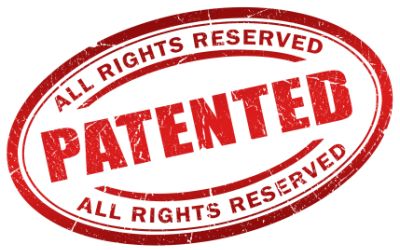Businesses and individuals are continuing to strategically acquire and use intellectual property, such as trademarks and patents, to distinguish themselves and protect their business models and profit margins.

Intellectual Property (IP) describes a category of intangible rights that individuals and companies use to protect their profit margins, businesses, brands and products. Patent and trademark rights are generally accepted as the most powerful and most commonly used IP rights. Below, find a simplified overview of the difference between patent and trademarks, as well as a description of the different types of patents and the rights patents and trademarks provide their owners.
Patents
A patent is a government-granted right that gives its owner the authority to exclude others from making, using or selling the patented invention for limited period of time. There are three different types of patents: 1) utility patents, 2) design patents and 3) plant patents. As the name implies, utility patents protect the utility or functional benefits of an invention. Design patents protect the ornamental or design features of the invention. Plant patents protect new varieties of sexually reproduced distinct plants.
In the United States, assuming the patent application does not claim priority to an earlier filed application, both utility and plant patents provide the patent owner with the right to exclude others from making, using or selling the invention in the United States for 20 years from the date the patent application was filed. Design patents provide the patent owner with the right to exclude others from making, using or selling the invention in the United States for 14 years from the day the patent is granted.
Companies routinely license their patent rights to others and collect royalties from these licenses or use the patents to protect their profit markings by excluding others from entering the market with their patented inventions. IBM, which is often granted the most number of U.S. patents in a year, is believed to receive about $1 billion dollars a year in licensing revenue. Despite common belief, articles of manufacture, formulations, methods, dietary supplements, functional foods and beverages and their ingredients, regardless of whether they are natural or synthetic, can be patented if they are novel and not obvious.
To obtain a patent in the United States, a detailed application containing a specification and claims must be filed with the U.S. Patent and Trademark Office (USPTO), which acts as a gatekeeper to allowing patents. USPTO reviews the application and, more than 99 percent of the time, responds with an Office Action rejecting one or more of the claims of the patent application. A registered patent and trademark attorney or the applicant then prepares one or more detailed responses or amendments that address all the rejections in the Office Actions with the hope that the rejections will be overcome, the claims will be allowed and the patent will be granted. Although the patent process is relatively long and complicated, the rights received are often very powerful and valuable to their owners.
Trademarks and Service Marks
A trademark or service mark is a word, phrase, logo, symbol or design, or a combination thereof, that identifies or distinguishes the source or origin of a company or individual’s products or services from other sources. For example, when consumers see or hear the term “iPhone," they immediately associate it with Apple Computer Inc. The word "trademark" is often used to encompass both trademarks and service marks. There are two other categories of marks which may be eligible for federal registration. Certification marks are used in conjunction with goods or services to indicate a particular quality or region of origin. Collective marks are used to indicate membership in a particular group.
The owner of a federal trademark registration enjoys certain exclusive rights, such as rights to prevent others from using marks that are the same or similar to the registered mark and the right to sue others for infringement or dilution of the trademark registration.
In the United States, registration of trademark or service mark provides several advantages such as providing notice to the public of the ownership of the mark, a legal presumption of ownership nationwide and the exclusive right to use the mark on or in connection with the goods or services. Trademark rights can be perpetual as long as the owner of the trademark continues to use the mark and correctly satisfies the various requirements of federal trademark law.
Business and individuals are continuing to strategically acquire and use IP to distinguish themselves and protect their business models and profit margins. As a result, IP rights have become more and more valuable, especially in the dietary supplement, nutraceutical, food and beverage and health and wellness arena.
This article is not intended to be legal advice.
Steve P. Hassid ( [email protected] , 310-922-2206) is partner and a registered patent and trademark attorney at Silicon Edge Law Group.
Learn more in Hassid's SupplySide West presentation "Intellectual Property 101: How to Profit From Your Company’s Patents and Trademarks" on Wednesday, Nov. 13 at 2 p.m.
About the Author(s)
You May Also Like




.png?width=800&auto=webp&quality=80&disable=upscale)